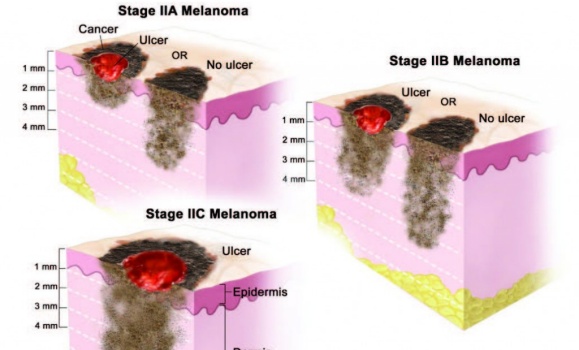Stories
» Go to news mainThe pathogenesis and clinical management of cutaneous melanoma: an evidence‑based review

Abstract
Cutaneous malignant melanoma (CM) is the leading cause of skin cancer-related mortality and accounts for approximately 1,250 deaths in Canada each year. It is also one of few cancers continuing to display rates of increasing incidence throughout the world. The past decade has brought significant growth in our understanding of the pathogenesis and clinical management of CM. This evidence-based review synthesizes that knowledge, beginning with a review of the epidemiology and etiology of the disease followed by a broad review of the roles of diagnostic imaging in its management. Special attention is given to the role of 18F-fluorodeoxyglucose (18F-FDG) positron emission tomography-computed tomography (PET/CT) in supporting assessment at primary presentation of disease, follow-up to surgical and nonsurgical treatment, and for the surveillance of high-risk asymptomatic patients. After a brief review of current treatment options, this article concludes with a demonstration of how and when uncertainty exists at the point of care systematic review processes may be used to resolve clinical questions. Learning Objectives: By the end of this Continuing Medical Education article, participants will be able to 1. Describe the epidemiology and etiology of cutaneous melanoma, 2. Describe broadly the role of diagnostic imaging in the clinical management of cutaneous melanoma, 3. Describe the specific roles and limitations of 18F-FDG PET/CT in the clinical management of cutaneous melanoma, 4. Describe broadly the best practice in the treatment of cutaneous melanoma, 5. Define the value of systematic review for synthesizing knowledge pertaining to a specific clinical question, and 6. Discuss the utility of 18F FDG PET/CT in the management of early-stage (AJCC 0-IIc) cutaneous melanoma. This is a CME article and provides the equivalent of 2 hours of continuing education that may be applied to your professional development credit system. A 12-question multiple choice quiz follows this reading. Please note that no formalized credit (Category A) is available from CAMRT.
Recent News
- Dr. Abraham receives CAIR Award
- Thank you to everyone who joined us for the 30th anniversary Radiology Research Day on May 8th!
- Nova Scotia’s Lung Screening Program expanding to Cape Breton, eastern mainland
- Donor‑supported nuclear medicine technology attracts top medical talent to the QEII
- Building Critical Skills at the Dalhousie Physician Leadership Workshop for Women in Radiology
- CAR/CSTR Practice Guideline on CT Screening for Lung Cancer
- CAR Practice Guideline on Bone Mineral Densitometry Reporting: 2024 Update
- CAR/CSACI Practice Guidance for Contrast Media Hypersensitivity
